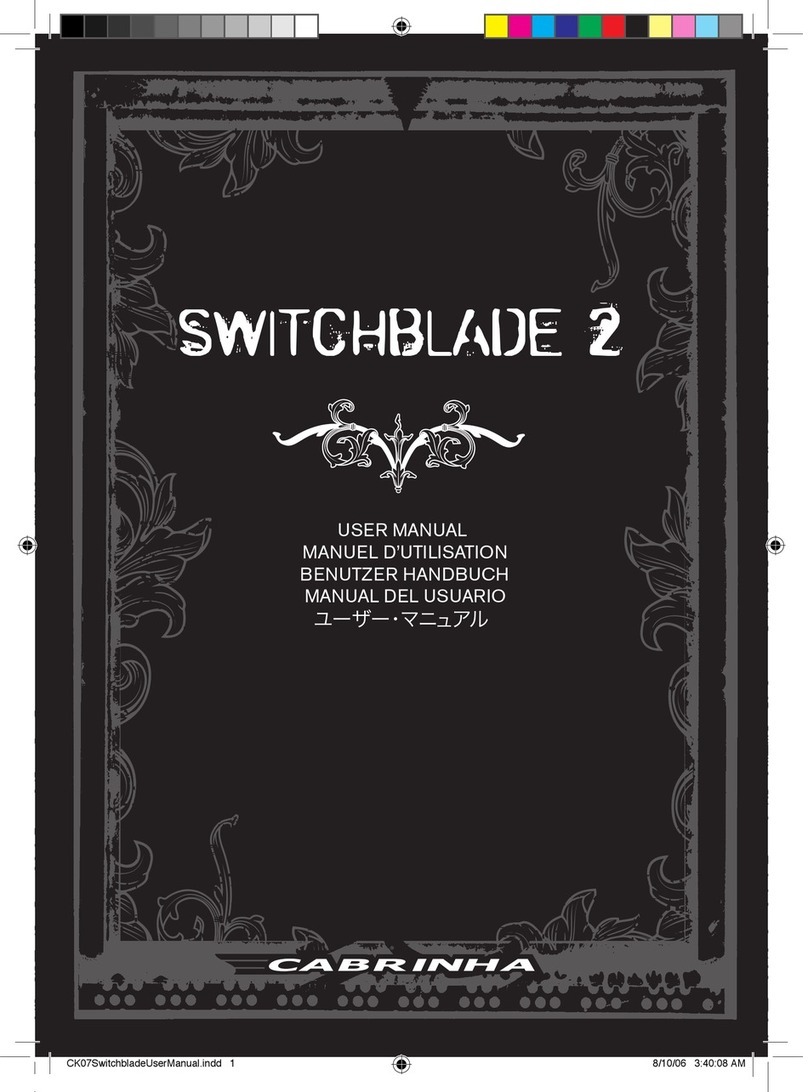KITE & CONTROL SYSTEM CARE
Due to the often extreme nature of kiteboarding, a thorough approach should be taken when
caring for your kite and all its associated rigging, as well as your protective gear.
PREPARING FOR YOUR SESSION
• Thoroughly check your protective
equipment (helmet, etc.) to make sure it is
in working order and in good condition.
• A frequent inspection of the kite and the
control system should be made in order
to identify punctures, tears, or abrasions
in the canopy, struts, or security systems.
It is also necessary to check the fly lines
for wear and for unwanted knots, which
may reduce the strength of the fly lines.
Check bridle lines and pulleys for wear
and replace when necessary.
• Do NOT rig on asphalt, cement, gravel,
or other abrasive surfaces; doing so may
damage your equipment. It is best to rig
on sand or grass. Damage done to your
equipment by rigging on abrasive surfaces
will not be covered under warranty.
• Do NOT rig among sharp objects that
could tear the canopy or puncture the
struts and leading edge bladder.
• Take care NOT to expose your flying lines
to sharp objects that may wear through
them.
• While setting up, secure your kite with
sand or sand bags. Do NOT secure your
kite with rocks or other sharp or abrasive
objects that may damage your kite.
BETWEEN SESSIONS
• NEVER leave an inflated kite unattended
on the beach for a long period of time.
Winds may shift or change and the kite
may become unsecured and fly off.
• Do NOT leave an inflated kite (secured
or not) directly exposed to the wind
for any length of time. This allows the
trailing edge to flutter excessively. Any
excessive fluttering may quickly break
down the finish properties of the material
and reduce it’s longevity. If you must leave
the kite exposed to the wind on the beach,
place sand or sand bags onto the areas of
the kite, near the trailing edge until the flutter
is stabilized. Do not use rocks or other sharp
objects.
• Do NOT leave your kite exposed to
sunlight for long periods of time. Between
sessions, choose a shaded area to secure
your kite. When not in use, stow away.
PROPER STORAGE
• DO NOT store your control system in an
area of high heat (such as inside a vehicle)
or in direct UV light. To do so may result in
deformation of the EVA components and
functionality of the control system.
• ALWAYS dry your kite prior to rolling or
folding. Folding or rolling a kite when wet may
affect the color clarity and longevity.
• Clear the system of sand or other foreign
objects before stowing.
• Once it is clean and dry, stow your control
system in a clean, dry, cool place.
• Do NOT place heavy objects on the control
system while storing.
• Wash your control system with fresh water
from time to time by placing the entire control
system (with lines wound onto the bar) into
a bucket of fresh water and let it sit for 5
minutes. Allow to dry thoroughly before
storing in a dry location.
• Once it is clean and dry, stow your control
system in a clean, dry cool place.
• Do NOT leave your kite inflated in your car
or car rack box; exposing the kite to extreme
temperatures while inflated may damage the
internal bladders.
IMPORTANT INFORMATION




























